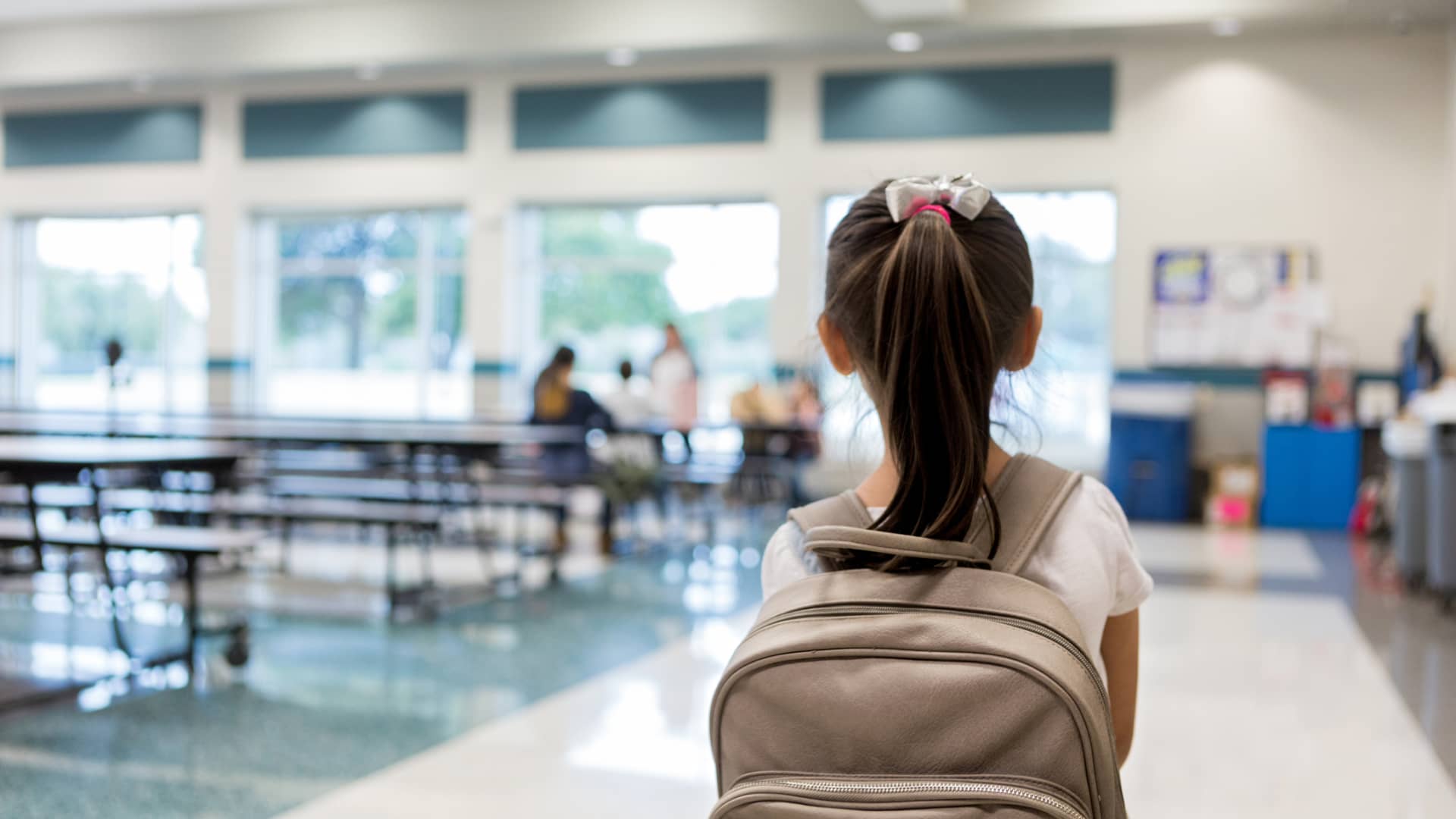
- Congress made free school meals available to all children, regardless of family income, during the Covid-19 pandemic.
- However, the policy was not renewed for the 2022-23 school year.
- Nine states have passed legislation to bring back free school meals for all, according to Food Research & Action Center data.
Some states are reestablishing a federal pandemic-era policy that offered free school meals to all kids, and most of them are doing so on a permanent basis.
Before the Covid-19 pandemic, students qualified for free or reduced-price school breakfasts and lunches based on their income. The federal government expanded that policy in March 2020, allowing schools to provide meals at no cost to all students, regardless of income.
That expansion was in place for the 2020-21 and 2021-22 school years. About 90% of U.S. school districts participated, according to the U.S. Department of Agriculture. However, Congress didn't extend the policy for the 2022-23 school year.
Get San Diego local news, weather forecasts, sports and lifestyle stories to your inbox. Sign up for NBC San Diego newsletters.
More from Personal Finance:
The 5 U.S. metro areas with the highest single-family rents
Many Americans feel trapped in their homes by their mortgages
How to apply for Biden's new SAVE student loan repayment plan
Nine states have passed legislation to bring back free school meals for all, according to Food Research & Action Center data. Seven of them — California, Colorado, Maine, Michigan, Minnesota, New Mexico and Vermont — have made the policy permanent, according to FRAC. Nevada did so on a temporary basis for the 2023-24 school year.
The Massachusetts Legislature passed a budget bill Monday that would permanently fund a universal free-meal program. Gov. Maura Healey is expected to sign the measure into law.
Money Report
The state laws are a direct response to the end of the federal free-meal waivers, experts said. The policies affect K-12 students, though some extend to prekindergarten, too, they said.
Pandemic offered a 'trial run' for free meals
"The pandemic was a trial run and it worked," Crystal FitzSimons, FRAC's director of school and out-of-school time programs, said of the universal free school meals.
Among other successes, the program alleviated pressure on household food budgets, FitzSimons said.
The average household with two school-age children pays $162 a month — $1,458 per year — for full-price school breakfasts and lunches, according to an Agriculture Department report issued last month. That expense is more than households' average electricity bill at $122 a month in 2021, the report said.
The USDA analysis was based on meal costs in the 2016-17 school year, when schools charged an average $1.48 and $2.57 for full-price breakfasts and lunches, respectively.
Inflationary pressures have since pushed up prices in many school districts, which have contended with higher costs for food and labor, said Diane Pratt-Heavner, a spokeswoman for the School Nutrition Association.
During the most recent school year, the typical K-12 student paid between $1.73 and $1.80 for a full-price breakfast and between $2.75 and $3 for lunch, according to the School Nutrition Association. The price range reflects the different costs for elementary, middle and high school students.
Since local school districts set their own prices, they can "vary widely" across the country, the School Nutrition Association said.
Loss of free meals may lead to hardship
In 2021, the National School Lunch Program provided 2.2 billion meals, about 99% of which were at a free or reduced price, according to USDA data. By comparison, 74% of meals were at a free or reduced price in 2019.
Students pay 30 cents and 40 cents, respectively, for reduced-price breakfasts and lunches.
The expiration of federal free-meal waivers for all students may potentially contribute "to the financial hardship of some households" at a time when inflation has led to an increase in the cost of living, wrote Saied Toossi, a USDA agricultural economist.
Kids from "food-insecure and marginally food-secure" households are more likely to eat school meals, according to the USDA.

Nearly two dozen other state legislatures are working to pass bills to extend the pandemic-era relief, according to FRAC.
In the meantime, families in the 41 states without a free-meal-for-all policy must apply for free or reduced-price school meals, as was the case before 2020.
Children qualify for free meals if their household's income is 130% of the federal poverty level or lower. For the 2023-24 school year, that amounts to $39,000 or less for a family of four, according to the School Nutrition Association.
They're eligible for reduced-price meals if their household income is between 130% and 185% of the poverty line, or up to $55,500 for a family of four.
Families with higher incomes must generally pay full price.






